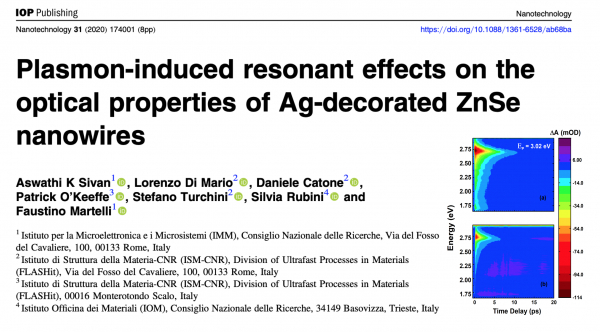In this work we show how the optical properties of ZnSe nanowires are modified by the presence of Ag nanoparticles on the sidewalls of the ZnSe nanowires. In particular, we show that the low-temperature luminescence of the ZnSe nanowires changes its shape, enhancing the phonon replicas of impurity-related recombination and affecting rise and decay times of the transient absorption bleaching at room temperatures, with an increase of the former and a decrease of the latter. In contrast, the deposition of Au nanoparticles on ZnSe nanowires does not change the optical properties of the sample. We suggest that the mechanism underlying these experimental observations is energy transfer via a resonant interaction, based on the fact that the localized surface plasmon resonance (LSPR) of Ag nanoparticles spectrally overlaps with absorption and emission of ZnSe, while the Au LSPR does not.
Plasmon-induced resonant effects on the optical properties of Ag-decorated ZnSe nanowires
The EFSL research group, in collaboration with CNR-IMM and CNR-IOM, has published a paper in Nanotechnology journal entitled “Plasmon-induced resonant effects on the optical properties of Ag-decorated ZnSe nanowires”, by Aswathi K. Sivan, Lorenzo Di Mario, Daniele Catone, Patrick O'Keeffe, Stefano Turchini, Silvia Rubini and Faustino Martelli.
© Copyright 2019 - EFSL ISM CNR







